Hargreaves Associates, Cambridge, Mass.
2016
Connecting the southwestern end of Brown’s Island with West 10th Street in Manchester
Since the turn of the 21st century, residents and visitors alike have fully embraced the downtown riverfront for its natural beauty, historic industrial infrastructure and sweeping vistas of the downtown and Manchester skylines. A riverfront focal point is Brown’s Island, a public park with venues for recreational and cultural activities as well as passive open green spaces.
The island also provides pedestrian and bicycle access to Manchester via the T. Tyler Potterfield Memorial Bridge, named for a former senior architectural planner for the City of Richmond (who authored “Nonsuch Place,” a history of Richmond’s landscapes). The base of the 1,600 foot span footbridge is built atop a former concrete dam (c.1900) that was part of a hydroelectric power plant that served Virginia Electric & Power Company (now Dominion Energy).
Hargreaves Associates of Cambridge, Mass. designed the dramatically straight span, Howard Shockey and Sons of Winchester, Va. was the contractor. For its entire one third of a mile length, the bridge appears to hover above its concrete base and the water. Most of the the bridge decking itself is made of aluminium sheets that appear to be composed of thin, one inch wide strips. The protective bridge railings are fashioned of stainless steel wire mesh and allows 98 per cent opacity. This closeness and openness to the rapids creates the feeling of elation for many of those crossing the bridge.
The crossing provides needed access to Manchester, which was an independent city until 1910 when it merged with Richmond. While long-neglected, Manchester is undergoing significant and dramatic residential redevelopment.
There are two cultural aspects to the bridge that lend special interest to the environs. The bridge span nearest Brown’s Island incorporates a permanent linear historical exhibition entitled: “Three Days in April 1865.” Embedded underfoot in the wooden and metal decking of the bridge, it chronicles the city’s last days as the capital city of the Confederate States of America: On April 3, 1865, just before the city fell as Union troops were advancing from the east, many residents fled over James River bridges to Manchester and the countryside beyond. On the Manchester side of the Potterfield bridge is a minimalist but monumental sculptural work entitled “The Path Untraveled.” The work consists of ten large and continuous rusted metal rings, each 17 feet in diameter. Joshua Wiener, a Colorado-based sculptor, was commissioned for the work.

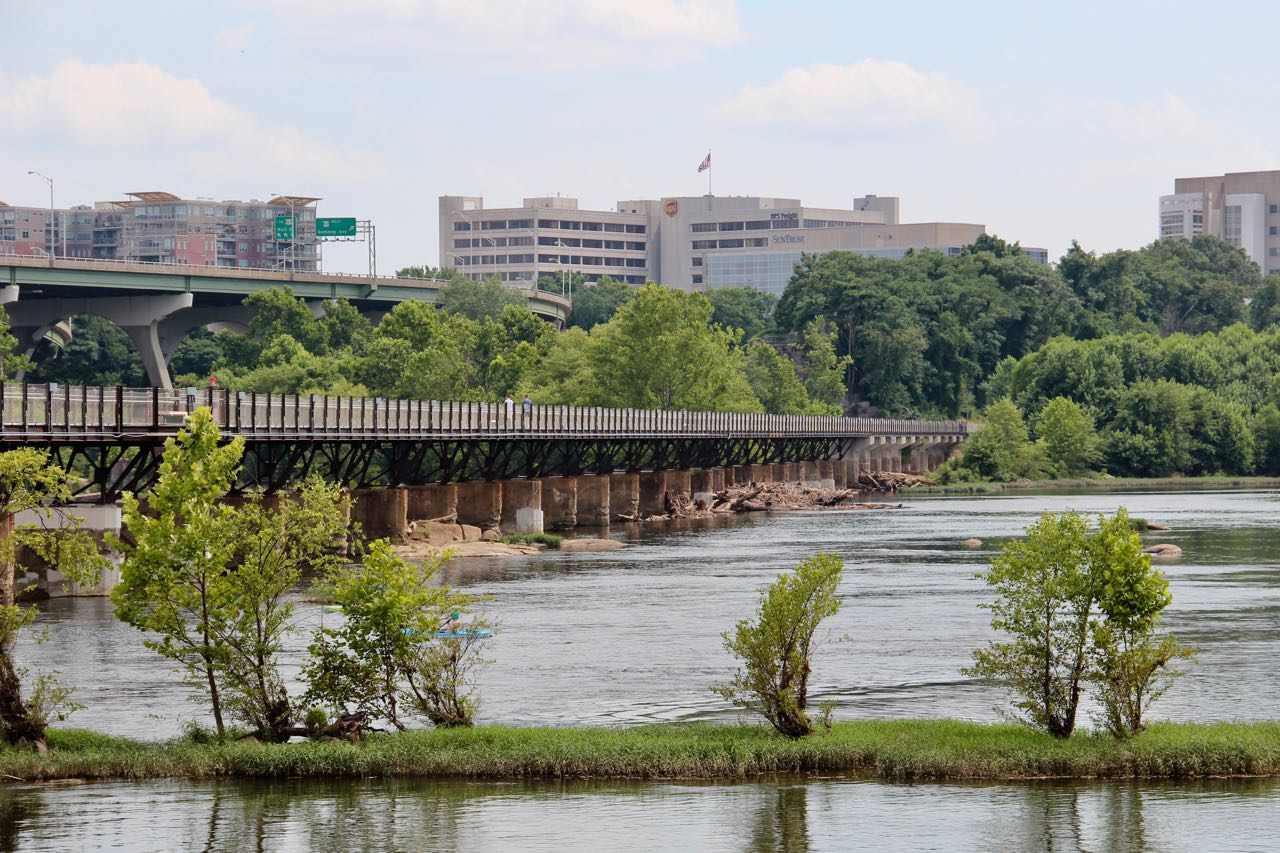
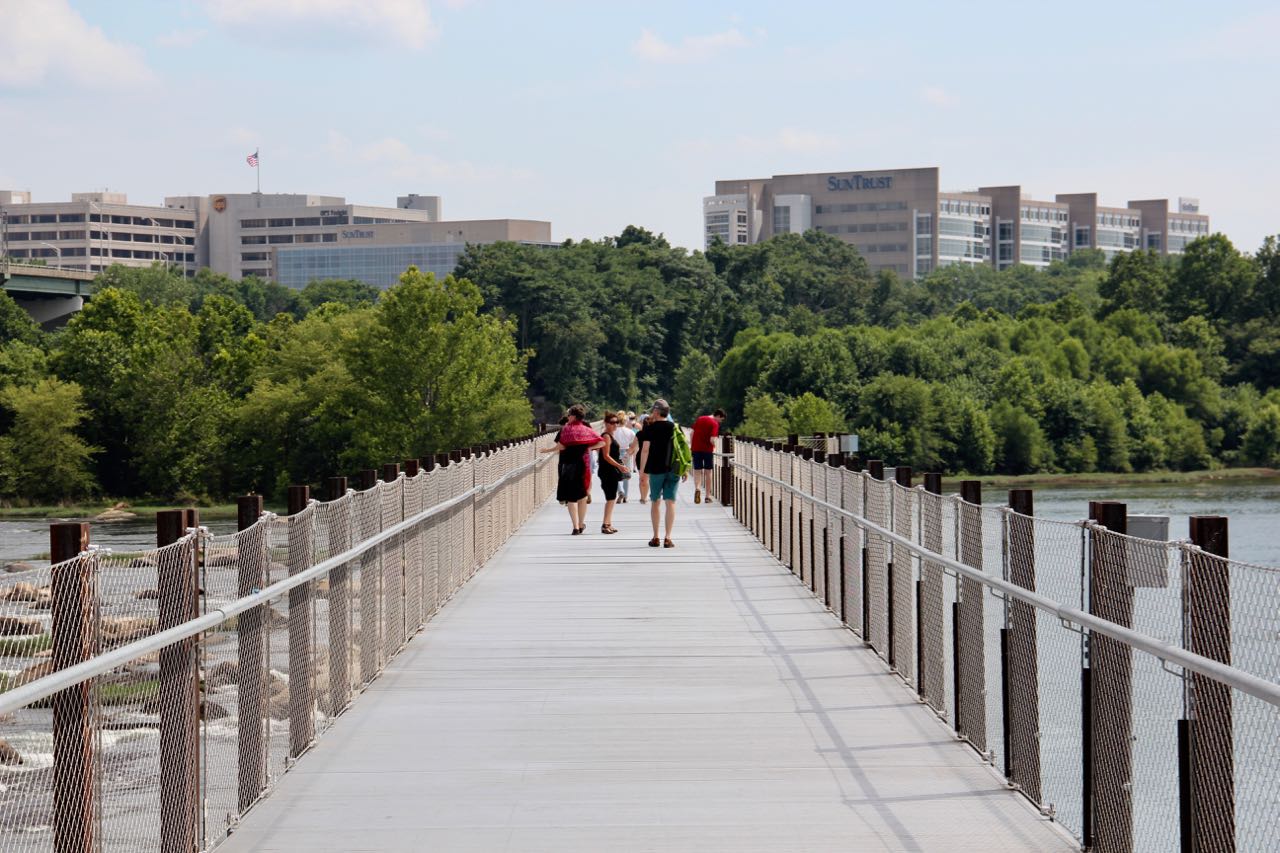
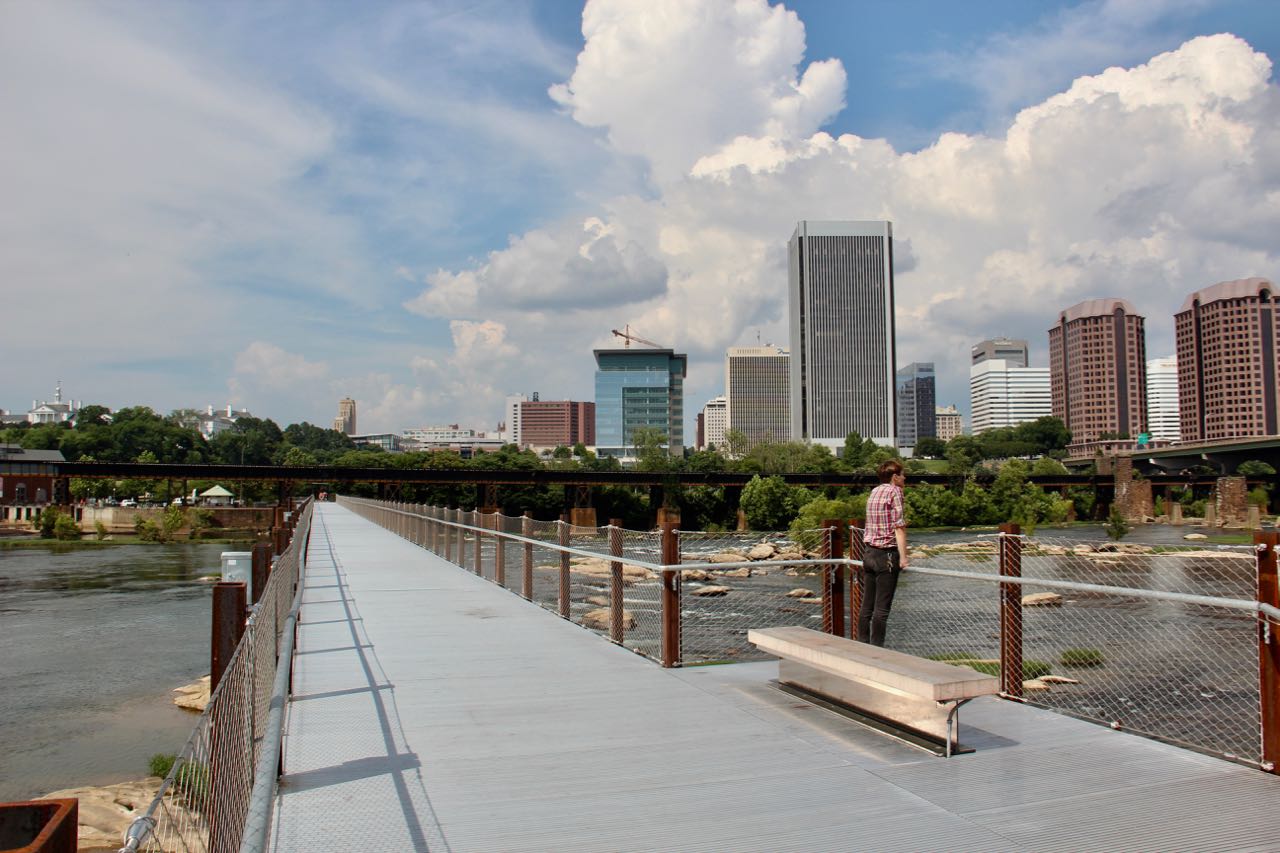


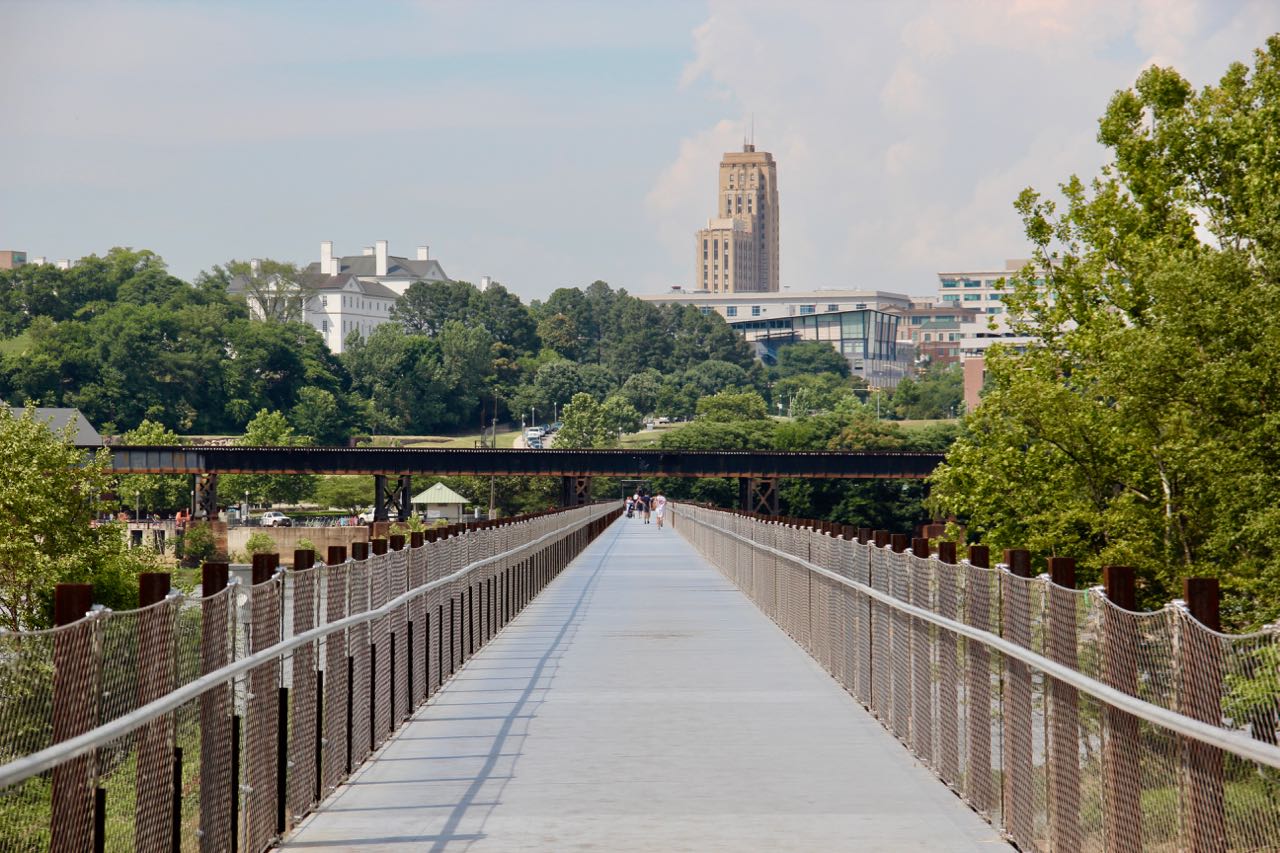



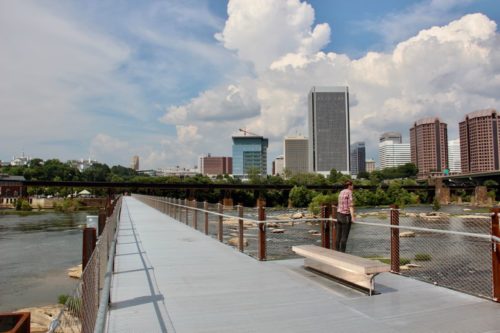




Write a Comment